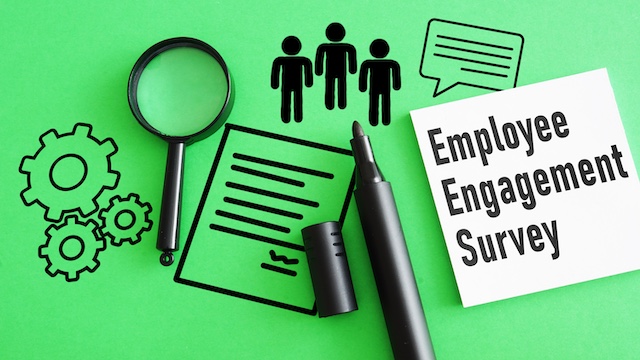Writing a performance review is more than just summarizing an employee’s achievements—it’s a strategic process crucial for employee growth and organizational success. It involves assessing strengths and areas for improvement and setting goals collaboratively. These reviews offer a platform for constructive feedback, aligning individual efforts with overarching company objectives. By outlining accomplishments and identifying areas needing development, managers facilitate open discussions to nurture talent and enhance performance. The reviews’ impact on employee engagement, motivation, and professional development is significant. Through well-crafted reviews, organizations cultivate a culture of continuous improvement, empowering individuals to thrive.
Help your employees take charge of their careers. Download these tips to make career development conversations more meaningful.
7 Ways to Write Effective Performance Reviews
With a blend of objective assessment, clear communication, and actionable insights, performance reviews become pivotal tools for driving productivity and fostering a workforce geared toward success. Here are seven ways to write effective performance reviews:
1. Set clear objectives
Setting the stage demands a strategic approach. Before diving in, outline SMART goals (Specific, Measurable, Achievable, Relevant, Time-bound) tailored to the employee’s role and company objectives. Rather than a vague ambition like “improving sales performance,” sharpen the focus to a targeted aim, like “elevating quarterly sales by 12%.” This method constructs a shared roadmap, which is crucial for reviews, fostering clarity, and aligning expectations. It’s the difference between a mere aspiration and a well-defined, actionable plan ingrained with purpose and precision.
2. Be comprehensive
Strive to conduct comprehensive employee reviews that provide complete, holistic assessments by gathering well-rounded feedback, detailing all accomplishments, and addressing the full range of competencies associated with each role. Thorough evaluations that include both qualitative descriptions and quantitative performance data provide broader context and insights. Compiling input from multiple reviewers also lends a fuller perspective on capabilities and areas for improvement. The goal is to facilitate enriched employee awareness and detailed evaluation records that better inform development trajectories.
3. Evaluate behavior and results
Assessing both an employee’s behaviors and the tangible results they produce provides a comprehensive perspective on performance. Rather than focusing only on outcomes, examine how those outcomes were achieved. Did the employee demonstrate strong collaboration skills? Did they go above and beyond expectations? Evaluating behaviors as well as concrete deliverables paints a 360-degree picture. For example, “During the past year, Olivia showcased exceptional performance by consistently surpassing sales targets, achieving a remarkable 20% increase in revenue. However, how she achieved these results truly sets her apart. Olivia exhibited exemplary collaboration skills, fostering a highly cohesive team environment that significantly contributed to our success. Her ability to listen actively and communicate effectively enhanced internal teamwork and strengthened client relationships, resulting in a remarkable 95% client retention rate.” provides more context than simply stating “met objectives.” Factor both qualitative and quantitative aspects into the review for optimal balance.
4. Be specific and objective
Feedback should reference specific situations and concrete examples illustrating strengths and areas needing development. Using objective observational language helps avoid ambiguity, unintentional biases, or injection of personal opinions into the evaluation.
Use specific examples from employees’ work to illustrate strengths and weaknesses. Doing so provides actionable feedback and avoids personal biases. Instead of “needs communication improvement,” try “Missed key updates on the X project. Consider implementing daily team huddles for better progress tracking.”
5. Incorporate 360-degree feedback
Incorporating 360-degree feedback into performance reviews provides invaluable perspectives that a single reviewer cannot match. Imagine gathering insights from all angles: managers weighing leadership capabilities, peers commenting on collaborative skills, direct reports assessing communication effectiveness, and even customers gauging client-centricity. This multi-faceted lens explodes with valuable data, offering information that can help the employee develop greater self-awareness. By obtaining well-rounded insights on accomplishments and growth opportunities from all angles, you can provide balanced, tailored feedback to the employee’s unique situation and capabilities.
6. Recognize achievements
Don’t let hard work go unnoticed! Acknowledging accomplishments, irrespective of size, boosts morale and reinforces desired behaviors. Celebrating both milestones and consistent improvement nurtures a positive work culture. Be specific with praise and appreciation. Highlight instances where employees exceeded expectations, tackled challenges, or contributed to team victories. Show genuine enthusiasm for their accomplishments in your description of their wins. It validates employees’ efforts and encourages them to strive for further success, fostering a motivated and engaged workforce.
7. Align on next steps and goals
It’s critical to conclude performance reviews by clearly defining aligned next steps and targeted goals that extend professional development. When meeting with the employee to discuss the review, collaboratively outline specific, measurable objectives that map to the company’s overarching plans and priorities for the upcoming cycle, and add these plans to the written review for both of you to reference afterward. By doing so, you provide helpful direction and suggestions. These include enriching skills through designated training courses, expanding responsibilities to foster growth opportunities, taking on specialized projects to showcase additional capabilities, or cross-training to gain wider organizational exposure.

5 Things to Avoid When Writing Performance Reviews
1. Falling into the vagueness trap
Avoid ambiguous or general feedback that lacks specificity, such as “good job” or “needs improvement.” Be specific! Vagueness can confuse employees, hindering their ability to understand areas for improvement or replicate successes. Instead, provide clear, detailed examples to support your assessments, fostering a better understanding of expectations. Use concrete examples from their work to illustrate strengths and areas for growth. Instead of “strong communication skills,” highlight “successfully negotiated the XYZ contract with improved active listening techniques.”
2. Personal attacks and blame games
Focus on the work, not the person. Avoid personal criticisms or placing blame, as these are demotivating and unproductive. Offer constructive feedback on actions and behaviors, not personal traits. Replacing “You’re always late” with “Missed three deadlines this month. Let’s brainstorm strategies for better time management” creates a positive path forward.
3. The unfair comparison game
Comparing employees breeds unhealthy competition and resentment. Keep the focus on individual growth and development. Evaluate against pre-established goals and performance standards, not against colleagues. Remember, each employee brings unique strengths and challenges to the table.
4. Overpromising and underdelivering
Don’t make unrealistic promises you can’t keep or offer empty praise with no substance. Be honest and transparent about expectations and challenges. Acknowledge difficulties while providing actionable support and resources. Avoid phrases like “You deserve a promotion soon” if there’s no clear path to achieve it.
5. Ignoring the big picture
Don’t get bogged down in minor details. Consider the employee’s overall contribution to the team and the company, recognizing their value beyond isolated tasks. Discuss how their strengths and efforts impact broader goals and projects. This broader perspective fosters a sense of belonging and purpose within the organization.
Looking to build and advance your company’s culture? Download this guide for practical tips.
Conclusion
Mastering the art of writing performance reviews is a strategic skill that extends beyond summarizing achievements—it’s about nurturing growth, fostering engagement, and driving organizational success. Through a blend of strategic planning, effective communication, and actionable insights, these reviews become pivotal tools in shaping a culture of continuous improvement.
INTOO offers a variety of career development programs to help your employees improve their performance and achieve their professional goals with your organization. Contact us today to learn more.











